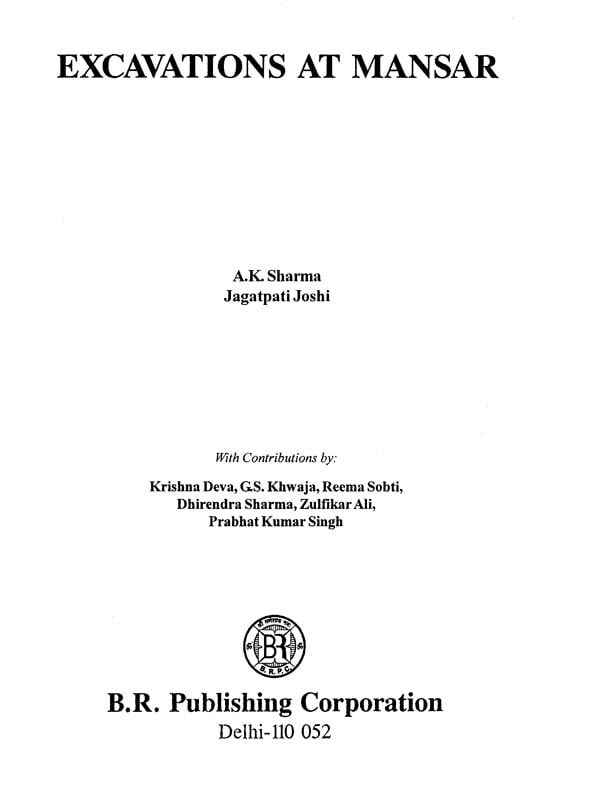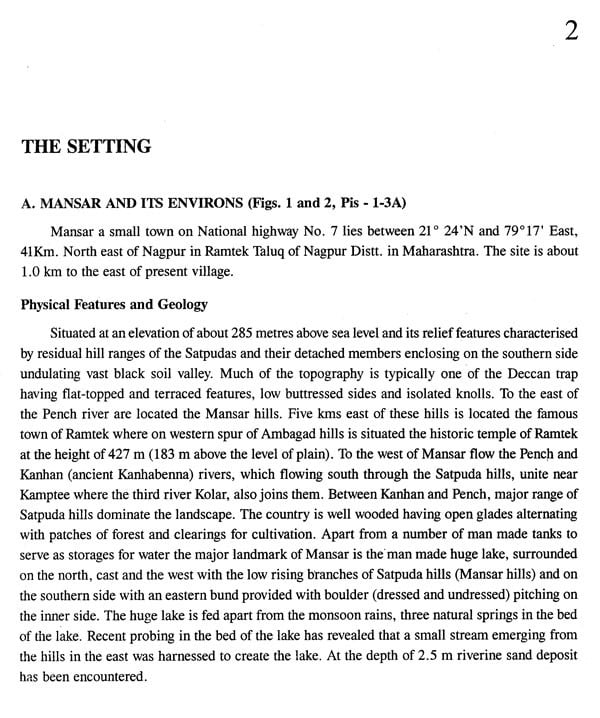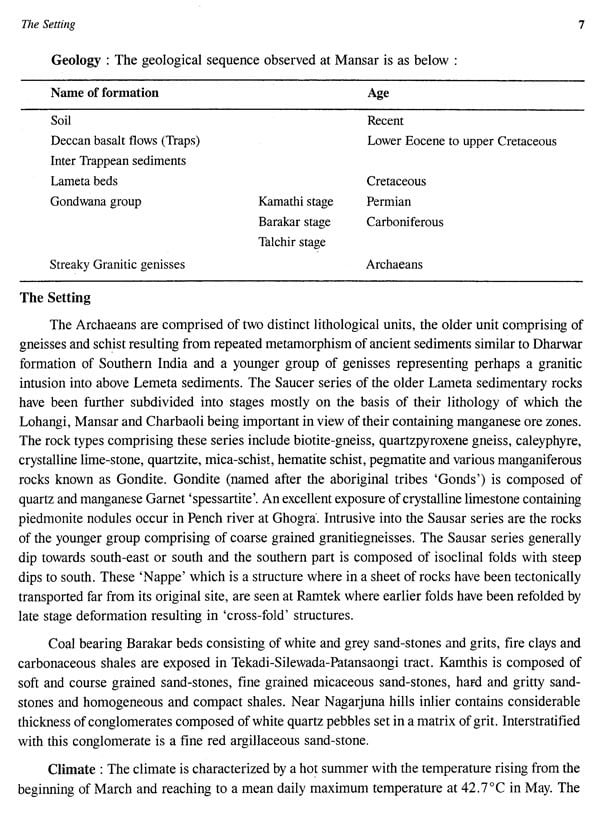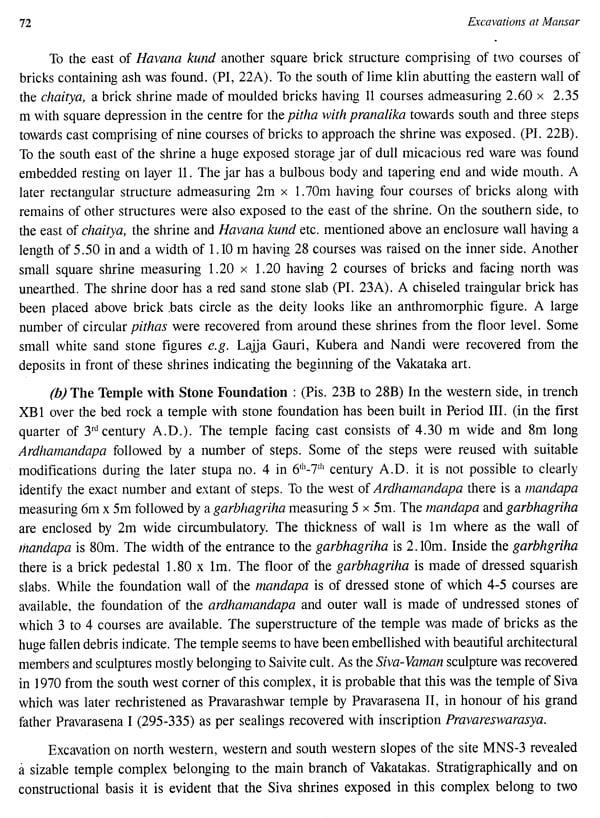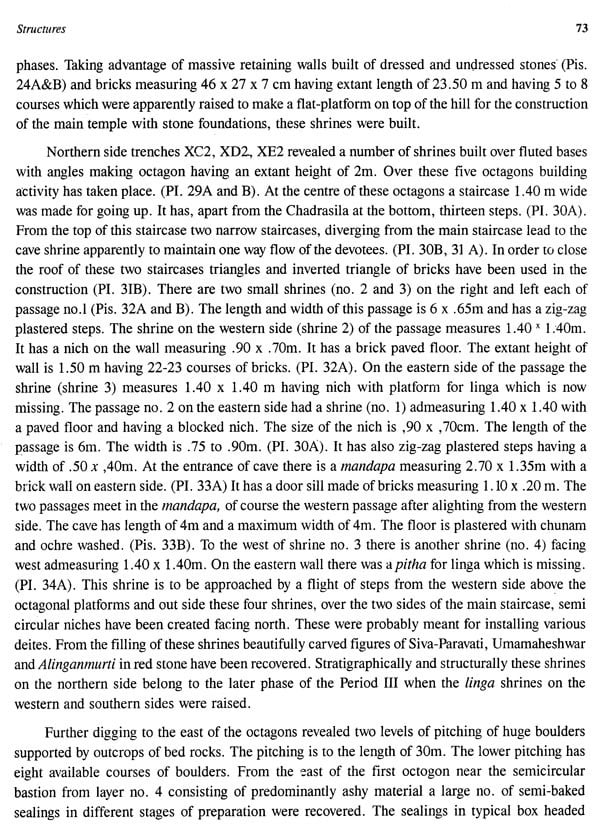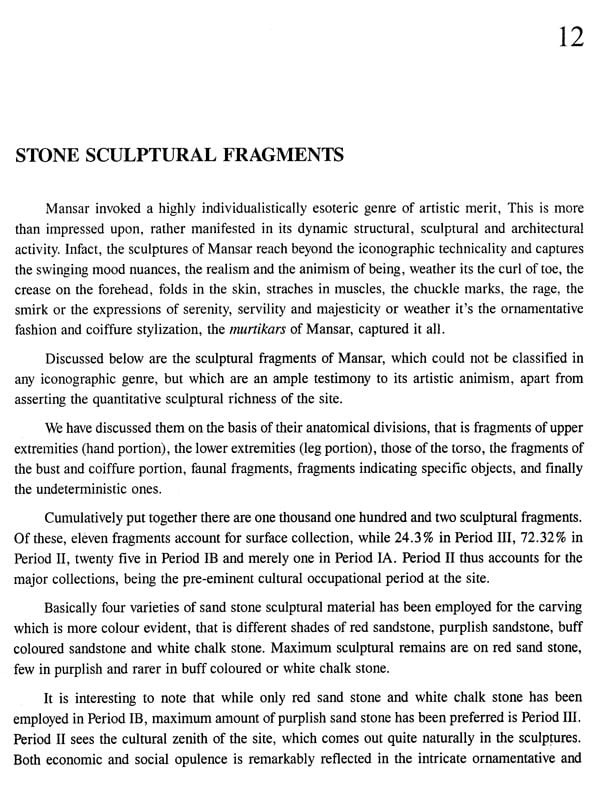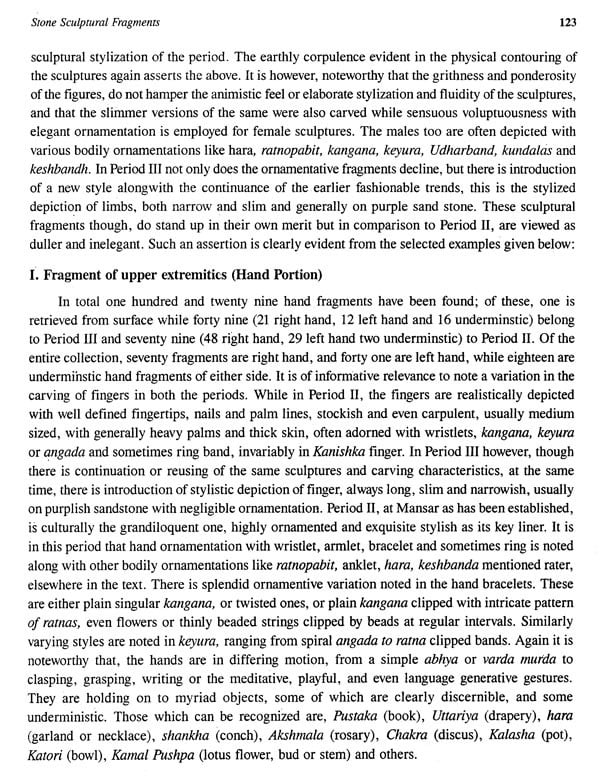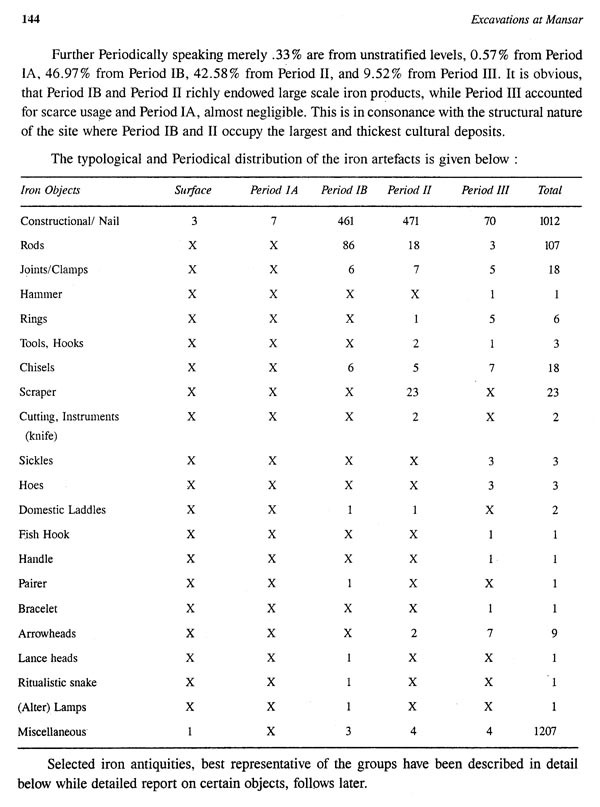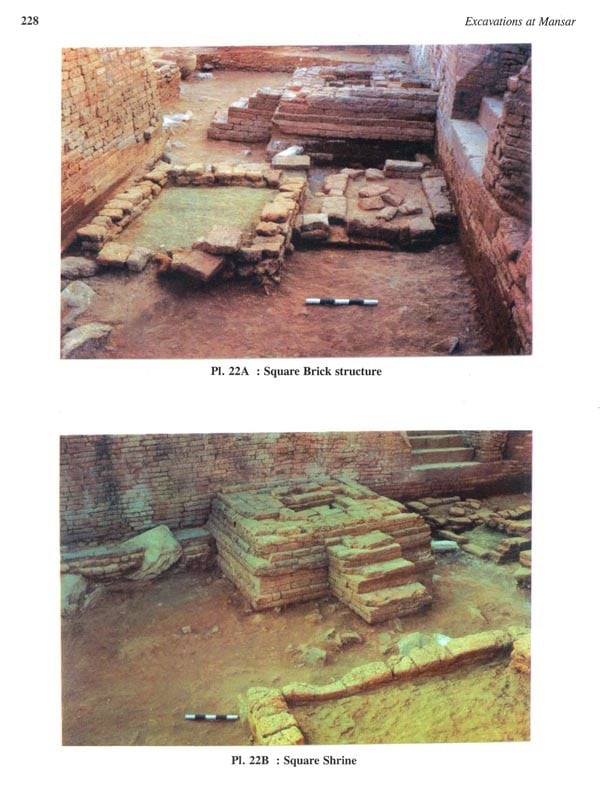
Excavations At Mansar
Book Specification
| Item Code: | AZE646 |
| Author: | A.K. Sharma and Jagapati Joshi |
| Publisher: | B.R. PUBLISHING CORPORATION |
| Language: | ENGLISH |
| Edition: | 2015 |
| ISBN: | 9789350502020 |
| Pages: | 360 (Throughout Color and B/w Illustrations) |
| Cover: | HARDCOVER |
| Other Details | 11.00x9.00 |
| Weight | 1.29 kg |
Book Description
Apart from the palace complex the site has revealed for the first time remains of Purushamedha yagya, star-shaped Siva temples belonging to c. 2nd B.C., Buddha vihar, Caitya, Buddhist Stupa. Siva temple which was named Pravareshvara temple, temple shops, replicas of dvadasha jyotirlinga and rock cut caves for meditation and Prabhavati Gupta's miniature Nrisimha temple, seals, sealing and inscriptions.
Mansar is the biggest early historical site so far excavated and preserved in Vidarbha region.
After retirement from Govern ment service he was appointed as officer. on special duty in IGNCA, New Delhi to excavate Jhiri with French team. All his excavation reports have been published.
1. Emergence of Early Culture in North East India.
2 Manipur. The Glorious past
3. Early man in Eastern Himalayas
4. Prehistoric Delhi and its Neighborhood
5. Early man in Jammu-Kashmir and Laddakh 6. Prehistoric Burials of Kashmir
7. The Departed Harappans of Kalibangan
8. Archaeo anthropology of Chhattisgarh
9. Indian Megaliths 10. Heritage of Tansa Valley
11. Excavating Painted Rock-Shelter
12. Excavating in a Cave, Cist and Church
13. Sculptural Art of Mansar
14. Sirpur: Town Planning and Architecture
15. Buddhist Bronzes from Sirpur
16. Excavation at Karkabhata, Chhattisgarh
17. Ayodhya Case: Archaeological Evidences
18. Secular Monuments of Sirpur
19. Ancient Temples of Sirpur
20. Buddhist Monuments of Sirpur
21. Excavation at Gufkral
He has edited Puratana, Puraprakasha, Purajagata and he is editor of Puramanthana yearly magazine on recent advances in Archaeology. Presently he is directing excavations at Rajim in Chhattisgarh. He has established Archaeological Museum at Mansar and Maa Anandmayee Smriti Museum at Kankhal (Haridwar). Presently he is Advisor to the Government of 1 Chhattisgarh and Member of Standing Committee of Central Advisory Board of Archaeology.
Application for permission to excavate at Mansar was given to the Director General, Archaeological Survey of India. New Delhi. The proposal was approved by the Standing Committee of the Central Advisory Board of Archaeology.
After getting licence and after making all preparations, and acquiring tools and plants along with necessary trained staff, we chose Hidimba Tekadi for the dig. The first pick fell almost in the centre of the hill on 8 January, 2000 to unearth the archaeological evidences for the epigraphical, literary and Sruti evidences mostly about Eastern Väkätakas who first ruled from. Nandivardhan, 6 km. South-east of Mansar and made Mansar's Hidimba Tekadi their Devakula sthanam and later shifted their capital from Nandivardhan to Mansar to be nearer to their Kuladevia.
We excavated at Mansar for nine seasons and archaeological evidences unearthed prooved all the above mentioned sources of evidence to be true. We also thought it proper to scientifically conserve all the archaeological remains and antiquities so that the present and future generations could physically see and feel the prosperity, richness of architectural, educational and social life from 204 century B.C. to first quarter of 6 century A.D. south of Vindhyas in general and in Vidarbha in particular.
We unearthed and conserved; now it is up to the Central and State Governments to preserve them and develop Mansar as a World Heritage Ecofriendly archaeological site as very few ancient capital cities have been excavated in India.
Pravarasena I returned to the faith of his ancestors as evidenced by six inscriptions pertaining to the period and styled himself as a paramamahesvara, who by Siva's grace carried the lance (sula) instead of the discus (cakra).
This was not objected to by his mother as she had three cornered relationship with Guptas, Vakatakas and the Nagas. Her mother was the daughter of Naga king married to Vikramaditya II Guptas), where as she was married in Vakataka family.
**Contents and Sample Pages**
